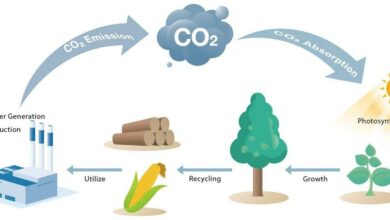After all is said and done, more is said than done

We all have good intentions. We want to be productive, eat healthily, exercise regularly, and be better versions of ourselves. However, sometimes it can be challenging to turn those intentions into action. This is what we call the “Talk-Do Discrepancy”. It’s the gap between what we say we’ll do and what we actually do. Understanding why this gap exists and how to close it can lead to a more fulfilling and successful life. In this blog post, we will explore some of the reasons why we struggle to follow through on our intentions and provide practical tips on how to overcome the Talk-Do Discrepancy. So, if you’re ready to make a change and turn your intentions into actions, then keep reading!
Understanding the Talk-Do Discrepancy: What it is and why it happens
The talk-do discrepancy is a common phenomenon that many people experience in their lives. It refers to the divide between what individuals say they will do and what they actually end up doing. This misalignment can stem from various factors such as external influences, internal conflicts, lack of motivation, or even unrealistic goal-setting.
One of the primary reasons behind the talk-do gap is the difference between intention and execution. People may have all the intentions to follow through on their plans, whether it be starting a new project, adopting a healthier lifestyle, or pursuing a long-held dream. However, when it comes to taking action, they often encounter hurdles that prevent them from translating their intentions into reality.
Moreover, the talk-do discrepancy can also be fueled by procrastination, fear of failure, perfectionism, or simply a lack of clarity on how to proceed. It’s crucial to delve deeper into the underlying reasons for this misalignment in order to address and overcome it effectively.
By understanding the talk-do discrepancy and its root causes, individuals can take proactive steps to bridge the gap between their intentions and actions. This self-awareness can pave the way for developing strategies, setting realistic goals, seeking support, and cultivating a mindset that is conducive to turning aspirations into achievements.
The Importance of Aligning Intentions with Actions
Aligning intentions with actions is a crucial step in bridging the gap between what we say we will do and what we actually end up doing. It is easy to set goals and make plans, but executing them requires dedication, focus, and consistency. When our intentions are in harmony with our actions, we are more likely to achieve our desired outcomes and make meaningful progress towards our goals.
One key aspect of aligning intentions with actions is self-awareness. Understanding our motivations, values, and priorities can help us set realistic goals that resonate with our true desires. By being honest with ourselves about what we truly want to achieve, we can create a clear roadmap for action and stay committed to our plans.
Moreover, consistency plays a vital role in aligning intentions with actions. Taking small, consistent steps towards our goals can lead to significant progress over time. By developing daily habits and routines that support our intentions, we can overcome procrastination and inertia, and make steady progress towards our objectives.
In essence, aligning intentions with actions requires a combination of self-awareness, commitment, and consistency. By bridging the gap between what we intend to do and what we actually do, we can turn our aspirations into reality and create a more fulfilling and purposeful life.
Identifying Your Core Values and Goals
Identifying your core values and goals is a crucial first step in closing the gap between intentions and actions. Your core values are the guiding principles that shape your behavior and decision-making. They represent what is most important to you and what you stand for as an individual or organization.
When you clearly define your core values, you gain a sense of direction and purpose. They serve as a compass that helps you stay true to yourself and make choices that align with your beliefs. This clarity in values can bridge the divide between what you say you want to do and what you actually end up doing.
Similarly, setting specific, measurable goals provides you with a roadmap to turn your intentions into tangible results. Goals give you something concrete to strive towards and help you track your progress along the way. By establishing clear goals that are in harmony with your core values, you can create a powerful framework for taking action and achieving meaningful outcomes.
Taking the time to identify your core values and set goals that resonate with them empowers you to move from mere contemplation to decisive action. It aligns your intentions with your actions, enabling you to live authentically and purposefully.
Overcoming Procrastination and Fear of Failure
Procrastination and the fear of failure are two common obstacles that stand in the way of turning intentions into actions. Procrastination often stems from a lack of motivation, unclear goals, or feeling overwhelmed by the task at hand. To overcome procrastination, break down your goals into smaller, manageable tasks and set specific deadlines for each one. By taking small steps towards your goal, you can build momentum and overcome the inertia that often leads to procrastination.
Fear of failure can also be a major roadblock on the path from intention to action. It’s natural to be afraid of failing, but it’s important to remember that failure is not the end of the road—it’s a learning opportunity. Instead of letting fear hold you back, reframe failure as a chance to grow and improve. Embrace the mindset that each setback brings you one step closer to success.
By addressing procrastination and fear of failure head-on, you can bridge the gap between your intentions and actions. Remember that progress is not always linear, and setbacks are a natural part of the journey towards achieving your goals. Stay focused, stay resilient, and keep taking steps forward, no matter how small they may seem.
Creating Action Plans and Setting Realistic Goals
Creating action plans and setting realistic goals is paramount in bridging the gap between intentions and actions. It’s common for individuals to have grand aspirations and good intentions, but without a clear roadmap and tangible goals, these intentions often remain unfulfilled.
To overcome the talk-do discrepancy, start by breaking down your larger objectives into smaller, manageable tasks. By creating a step-by-step action plan, you can outline the specific actions needed to progress towards your goals. Setting realistic timelines and milestones will help keep you accountable and on track.
Additionally, it’s crucial to set SMART goals – specific, measurable, achievable, relevant, and time-bound. This framework ensures that your goals are clear, quantifiable, realistic, aligned with your objectives, and have a defined timeframe for completion. By setting SMART goals, you can gauge your progress, stay motivated, and adjust your actions as needed to stay on course.
Remember, the journey from intentions to actions requires dedication, perseverance, and a well-defined plan. By creating action plans and setting realistic goals, you empower yourself to turn your aspirations into tangible outcomes.
Prioritizing Tasks and Managing Time Effectively
Prioritizing tasks and managing time effectively are crucial steps in bridging the gap between intentions and actions. It’s easy to get overwhelmed by a long to-do list or feel like there’s never enough time in the day to accomplish everything you set out to do. However, by strategically prioritizing tasks based on their importance and urgency, you can ensure that you are focusing your time and energy on the activities that will have the most significant impact.
One effective way to prioritize tasks is to use the Eisenhower Matrix, which categorizes tasks into four quadrants based on their importance and urgency. Tasks are classified as either important and urgent, important but not urgent, urgent but not important, or neither urgent nor important. By identifying which tasks fall into each category, you can allocate your time and resources accordingly, focusing on the tasks that align with your goals and objectives.
Additionally, time management techniques such as setting specific goals, breaking tasks into smaller, manageable steps, and using tools like calendars and to-do lists can help you stay organized and on track. By creating a schedule that allocates time for high-priority tasks and minimizes distractions, you can increase your productivity and make meaningful progress towards achieving your goals.
Ultimately, by prioritizing tasks effectively and managing your time wisely, you can overcome the talk-do discrepancy and turn your intentions into actions.
Cultivating Self-Discipline and Accountability
Cultivating self-discipline and fostering a sense of accountability are crucial steps in bridging the gap between intentions and actions. Self-discipline involves the ability to control one’s impulses, emotions, and behaviors in order to achieve long-term goals. It requires setting clear objectives, creating a structured plan of action, and adhering to it with consistency and determination.
Accountability plays a complementary role in this process. By holding yourself answerable for your actions and decisions, you are more likely to stay committed to your goals and follow through on your plans. This can be achieved through various methods, such as setting deadlines, tracking progress, seeking feedback from others, or sharing your goals with a supportive community.
Developing self-discipline and fostering accountability are skills that can be honed over time through practice and perseverance. By staying mindful of your intentions, setting realistic expectations, and staying committed to your personal growth, you can overcome the talk-do discrepancy and turn your aspirations into tangible achievements.
Seeking Support and Accountability Partners
Seeking support and accountability partners can be a game-changer when it comes to bridging the gap between intentions and actions. Surrounding yourself with individuals who understand your goals, offer encouragement, and hold you accountable can significantly boost your motivation and commitment to follow through on your plans.
Whether it’s a friend, family member, mentor, or colleague, having someone in your corner can provide the necessary support and guidance to help you stay on track. Accountability partners can help you set realistic goals, track your progress, celebrate your successes, and provide constructive feedback when needed.
Furthermore, sharing your goals and commitments with others not only helps you stay focused but also creates a sense of responsibility and commitment to follow through on your intentions. By having someone to share your journey with, you are more likely to stay motivated, overcome challenges, and ultimately turn your intentions into actions.
So, don’t be afraid to reach out and seek support from those around you. Building a strong support system and accountability partnership can be the missing piece in your quest to close the gap between your intentions and actions.
The Power of Positive Habits and Mindset
Developing positive habits and cultivating a growth mindset are essential steps in bridging the gap between intentions and actions. Habits play a significant role in shaping our behavior, as they are essentially automatic responses to certain cues or triggers. By consciously establishing positive habits that align with our goals and intentions, we can create a framework that supports consistent action.
Moreover, cultivating a growth mindset is crucial in overcoming obstacles and setbacks on the path towards achieving our goals. A growth mindset allows us to view challenges as opportunities for learning and growth, rather than insurmountable barriers. By embracing a positive and resilient mindset, we can navigate challenges with confidence and perseverance, ultimately moving closer to turning our intentions into actions.
Incorporating daily practices that reinforce positive habits and foster a growth mindset can significantly impact our ability to follow through on our intentions. Through consistent effort and a belief in our capacity for growth and change, we can empower ourselves to take meaningful steps towards realizing our aspirations.
Celebrating Small Wins and Staying Motivated
Celebrating small wins and staying motivated are crucial steps in closing the gap between intentions and actions. Oftentimes, we set lofty goals for ourselves but struggle to maintain motivation when progress seems slow or when faced with obstacles. By acknowledging and celebrating small victories along the way, we can boost our morale and stay energized to continue working towards our larger objectives.
Every step taken, no matter how small, is a step closer to achieving our goals. Whether it’s completing a task ahead of schedule, receiving positive feedback from a client, or even just staying consistent with our efforts, these accomplishments deserve recognition. Celebrating these small wins not only instills a sense of achievement but also reinforces positive behavior, making it more likely for us to stay committed to our goals.
Moreover, staying motivated is essential for long-term success. It’s normal to experience dips in motivation, but finding ways to reignite our drive is key. This could involve setting rewards for reaching milestones, surrounding ourselves with a supportive network, or revisiting our reasons for pursuing our goals in the first place.
By celebrating small wins and staying motivated, we can maintain momentum, overcome challenges, and ultimately bridge the gap between our intentions and actions. Remember, progress is progress, no matter how small – so celebrate each step forward on your journey to success.
Reviewing and Adjusting Your Action Plans
Reviewing and adjusting your action plans is a crucial step in bridging the gap between intentions and actions. Oftentimes, we set out with the best of intentions and well-crafted plans, only to realize that unforeseen challenges or changing circumstances require us to adapt our strategies. This is where the flexibility and agility of reviewing and adjusting action plans come into play.
By regularly revisiting your action plans, you can assess their effectiveness, identify areas for improvement, and make necessary adjustments to stay on track towards your goals. Whether it’s a weekly check-in, a monthly review, or quarterly evaluations, setting aside dedicated time to reflect on your progress and make course corrections is key to closing the gap between intentions and actions.
Moreover, by engaging in a continuous feedback loop with your action plans, you can better align your efforts with your objectives, leverage new opportunities, and address potential roadblocks before they derail your progress. Remember, adaptation is not a sign of failure but rather a strategic response to the dynamic nature of goal pursuit.
Closing the Gap and Living a Purposeful Life
In conclusion, bridging the divide between our intentions and actions is a vital step towards living a purposeful life. It is easy to get caught up in the cycle of planning and dreaming without taking concrete steps towards our goals. By understanding the factors that contribute to this talk-do discrepancy, we can start making positive changes in our lives.
Living with intention requires mindfulness, self-awareness, and a commitment to taking consistent action. It is about aligning our thoughts, values, and behaviors to create harmony in our lives. By setting clear goals, breaking them down into manageable steps, and holding ourselves accountable, we can start closing the gap between where we are and where we want to be.
Remember that progress is not always linear, and setbacks are a natural part of the journey. It is essential to cultivate resilience, perseverance, and a growth mindset to overcome obstacles and stay focused on our aspirations. By taking small, intentional actions each day, we can move closer to realizing our dreams and living a purposeful, fulfilling life.
So, let us commit to closing the gap between our intentions and actions, embracing challenges as opportunities for growth, and living each day with purpose and passion. Together, we can create a life that reflects our deepest values and aspirations, making a positive impact on ourselves and the world around us.




